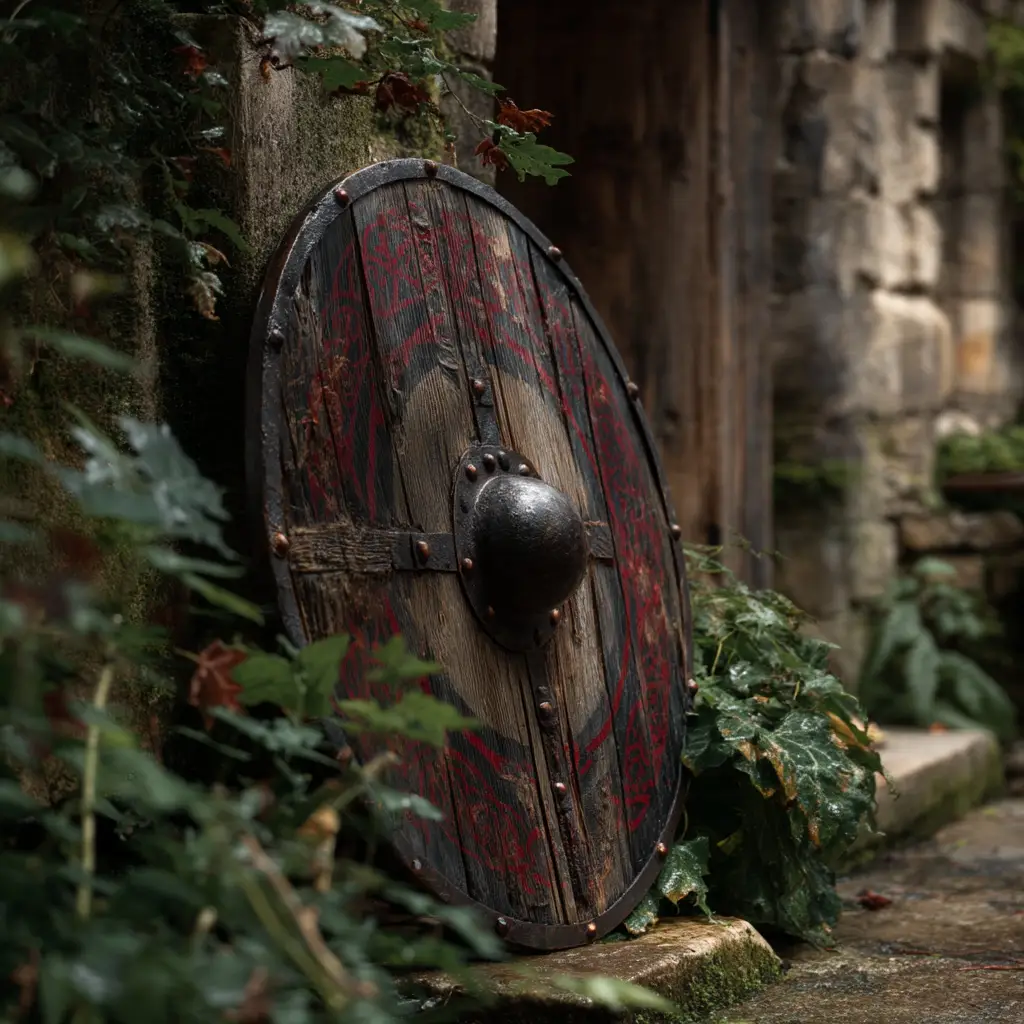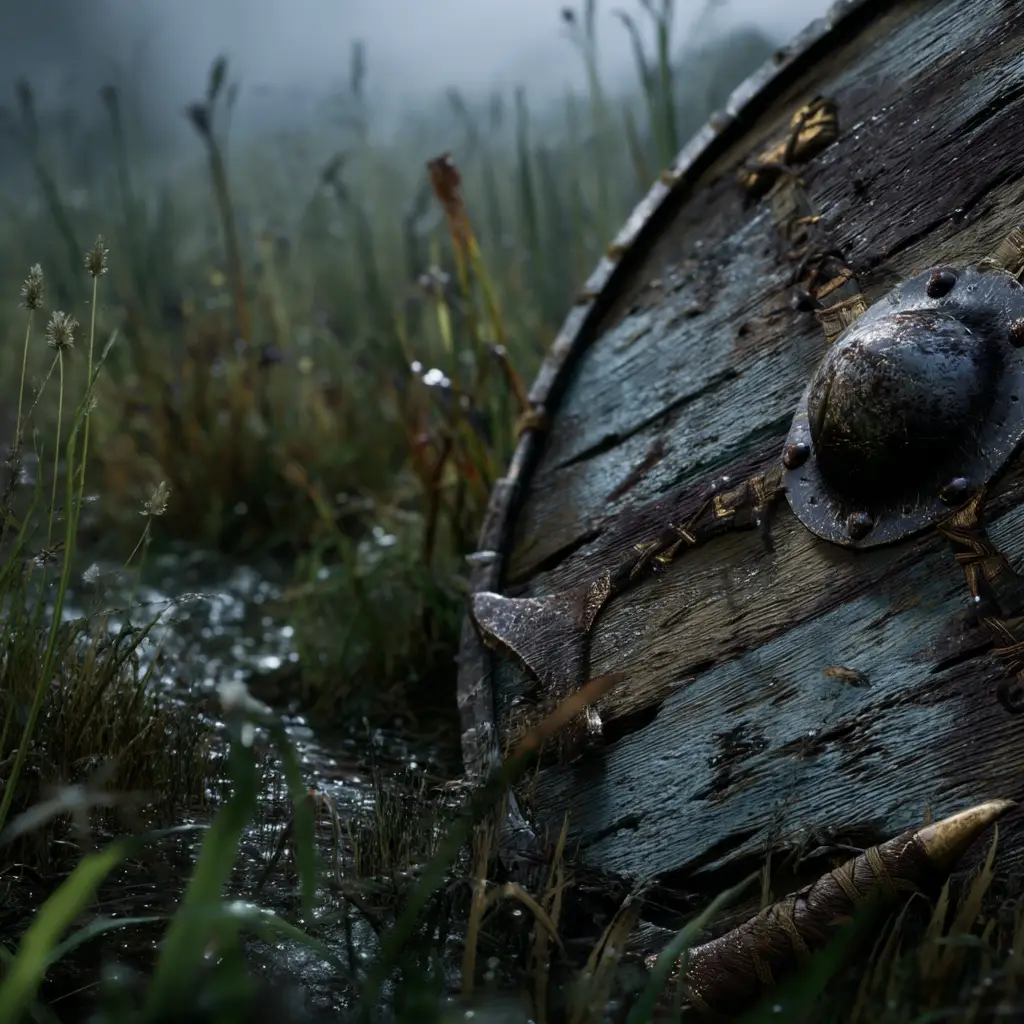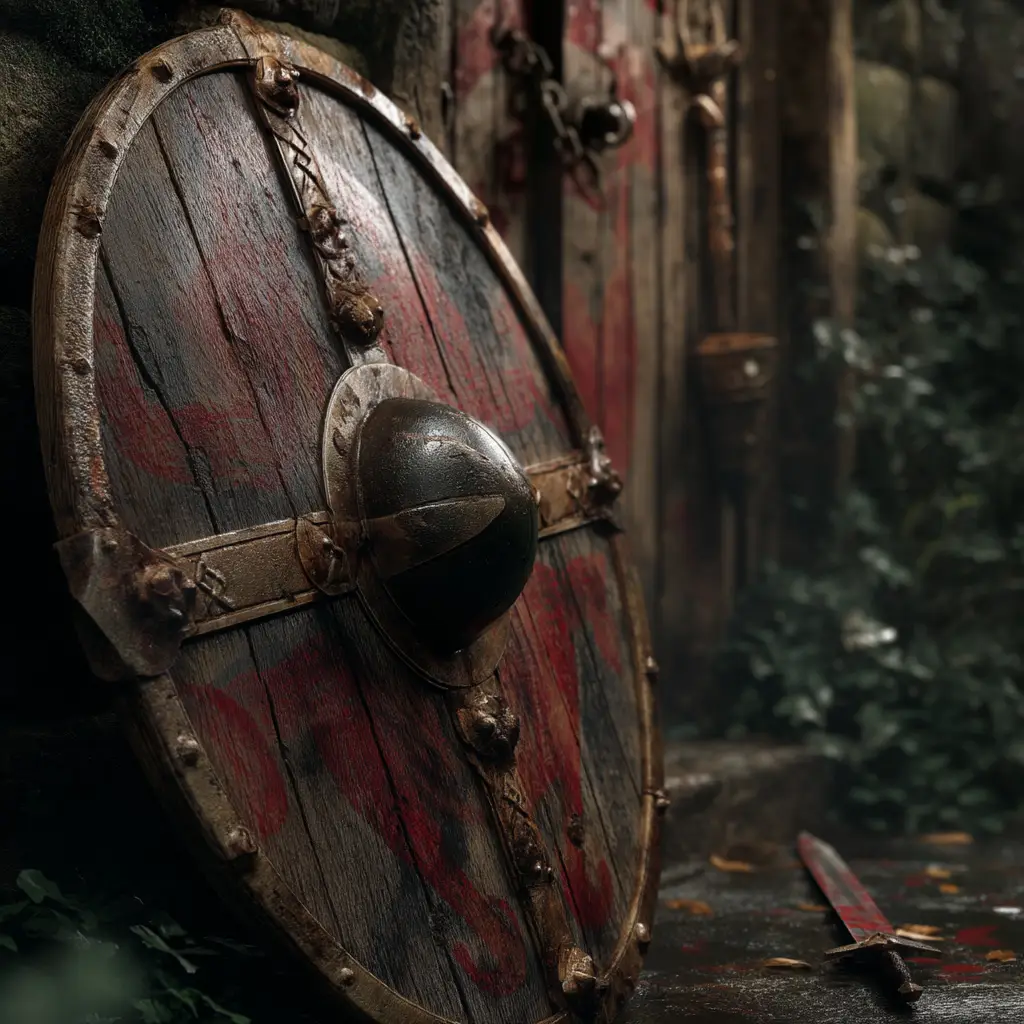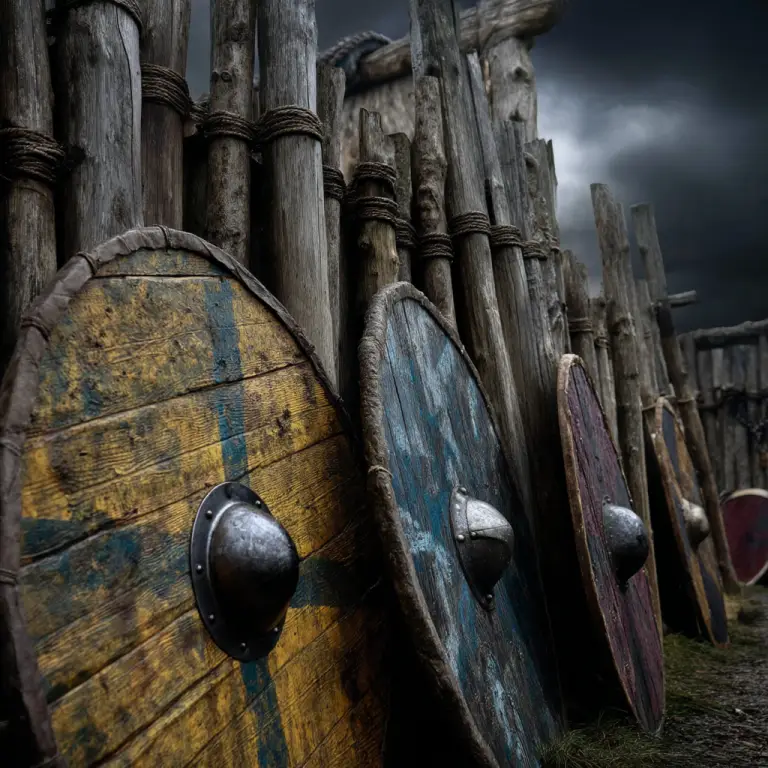Viking Shields – Design, Use, and Symbolism
Viking shields were a vital part of a warrior’s gear, offering protection in battle and often reflecting the owner’s identity, status, and culture. Lightweight yet durable, Viking shields were both practical defensive tools and, at times, works of craftsmanship.
The Viking shield was more than just a tool of war; it was a vital part of a warrior’s identity, offering both protection and symbolism. For a Viking, the shield was as important as his sword or axe, and it was carried not only in battle but also on voyages and raids.
Materials and Construction
Viking shields were typically made from wood, often linden (lime), pine, fir, or alder. Linden was especially prized because it was light and had good shock absorption. The shield would usually be made from several planks glued or pegged together, forming a circular disc between 75 cm and 90 cm in diameter, though larger and smaller versions existed.
The front was often covered with a thin layer of leather or rawhide to strengthen it and reduce splitting. The edge might be reinforced with rawhide, leather binding, or, more rarely, a metal rim.
In the centre of the shield was a prominent iron boss—a domed piece of metal riveted over a hole where the warrior gripped the shield. This boss protected the hand and could also be used offensively in close combat.
Grip and Handling
Viking shields were typically held with a central grip rather than strapped to the arm. This allowed for greater mobility and control, making it easier to deflect blows and manoeuvre during battle. The balance between offence and defence was important in Viking fighting techniques, and shields were an active part of combat, not just passive protection.
The lightness of the shield made it suitable for the shield wall tactic, where warriors stood shoulder-to-shoulder with overlapping shields, forming a defensive barrier. These formations were crucial in Viking and Anglo-Saxon warfare.
Decoration and Symbolism
While many Viking shields were plain and practical, others were painted or decorated, particularly by wealthier warriors or leaders. Colours might include red, yellow, black, or blue, and some shields featured patterns such as spirals, crosses, or animals. These designs could reflect personal or clan identity, mythology, or symbolic meaning—although much of this is speculative due to limited archaeological evidence.
Some sources suggest that painted shields could have a psychological effect on opponents, adding to the fearsome image of Viking warriors.
Use in Battle
In combat, the shield was used for blocking and parrying, but also for shield strikes, pushing enemies, or breaking formations. The rounded shape and strong boss made it effective for controlling the space around the body. In a shield wall, warriors relied on their shields to protect themselves and their comrades, creating a unified line of defence.
Over time, shields would become battered and damaged, and they were often replaced rather than repaired extensively. They were viewed as essential and expendable parts of a warrior’s kit.
Burial and Status
Shields were sometimes placed in graves, especially in the burials of high-ranking individuals or warriors. This highlights their symbolic and practical importance in Viking society. A decorated shield in a burial could signify honour, bravery, and the role of the individual in life and in legend.
Conclusion
Viking shields were more than just wooden circles used in combat—they were versatile, well-crafted tools that balanced protection, mobility, and symbolism. Whether plain or ornate, they were a core element of Viking warfare and identity, offering a fascinating glimpse into how the Norse people lived, fought, and remembered their dead.



